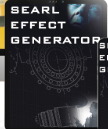The Moray Generator refers to a device developed by American inventor Thomas Henry Moray in the early 20th century. Moray claimed that his generator could harness radiant energy from the environment to produce substantial electrical power without an external fuel source.
General Description:
Thomas Henry Moray’s device, often referred to as the “Radiant Energy Device,” was designed to capture and convert radiant energy—an omnipresent form of energy believed to permeate the universe—into usable electricity. The apparatus reportedly consisted of specialized components, including advanced solid-state detectors and unique vacuum tubes, which Moray claimed could generate up to 50,000 watts of power. Demonstrations of the device were conducted during the 1920s and 1930s, with numerous witnesses reporting successful operation.
Pros:
- Innovative Energy Concept: The Moray Generator introduced a novel approach to energy generation by attempting to tap into a ubiquitous and renewable energy source.
- Potential for High Energy Output: If functional as claimed, the device could provide substantial power without the need for conventional fuels.
Cons:
- Lack of Scientific Validation: Moray’s claims were not independently verified, and the scientific principles underlying the device remain unproven.
- Technical Skepticism: The concept of harnessing radiant energy as described by Moray is not widely accepted in the scientific community, leading to doubts about the device’s feasibility.
Frequently Asked Questions (FAQs):
- Did the Moray Generator receive a patent?Thomas Henry Moray was granted a patent for an “Electrotherapeutic Device” in 1949. However, he did not secure a patent for his radiant energy device, as the patent office was skeptical of its functionality.
- Is there any modern replication of the Moray Generator?To date, there have been no verified replications of Moray’s device, and it remains a topic of interest primarily within alternative energy research circles.
- What is radiant energy?Radiant energy refers to energy transmitted in the form of electromagnetic waves. While the term is scientifically recognized, the specific application and source of radiant energy as proposed by Moray are not well-defined or accepted in mainstream physics.
Conclusion:
The Moray Generator represents an intriguing chapter in the history of energy research, highlighting early 20th-century efforts to explore alternative energy sources. Despite the innovative claims, the device lacks scientific validation and remains unproven. As such, it serves as a historical curiosity rather than a viable energy solution.
Be the first to review “Moray Generator” Cancel reply
Related products
Alternative Energy
Alternative Energy
Alternative Energy
Alternative Energy
Alternative Energy
Alternative Energy
Alternative Energy
Alternative Energy












Reviews
There are no reviews yet.